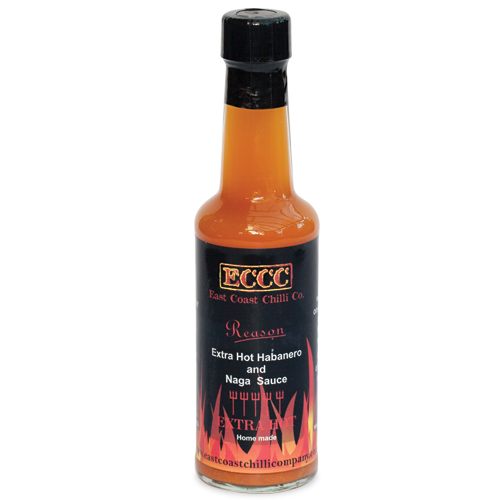Ever wondered this? I did. What’s the difference between a naga chilli, a bhut jolokia chilli and ghost pepper? Indeed is there a difference? Sure, it’s no longer the world’s hottest chilli but it set the standard the others now follow and for many it’s still the go-to chilli if you’re after real heat.
So I did a little research. Well, actually quite a lot. Bear with me… (My initial signposting there might lead you to think this is going to be a bit of bumpy ride and you’d be right, but take a deep breath and hold tight because it’ll be worth it in the end.)
Wikipedia will tell you that the bhut jolokia is also known as the bih jolokia, u-morok, ghost pepper, ghost chille pepper, red naga chilli and ghost chilli. This is echoed by bhut-jolokia.net. It then adds that jolokia is the Assamese word for capsicum, or pepper.
It continues to state that in Assam, India (one of the regions it’s produced) it’s widely known as bhot jolokia or bih jolokia and is believed to be named after the Naga warriors inhabiting the plains and hills of Nagaland, which to me conjures up images of a chilli-based theme park. Bih jolokia apparently means “poison pepper” because of its heat.
An article on ushotsuff.com also states this but hints that the bit about Naga warriors might be just an alternative source of the name. (Whatever, the Naga bit obviously means it’s got something to do with Nagaland.)
However, as with different wine growing regions within a country, differing types of soil, temperature, amounts of sunlight, etc, will produce different tasting wines from the same grape varieties, so it’s the same with chillies. This is one of the reasons for the ranges of Schoville heat ratings for the same type of chilli. So it follows that in different growing regions the same chilli may vary in size, shape, colour, taste and ultimately name. People living north of the Brahamutra River call it the Bhot Jolokia whilst those living to the south call it the Naga Jolokia.
The article goes on to state that the Bhut reference relates to a distortion of the colloquial nomenclature of Bhot to Bhut, the former meaning “of Bhotiya origin” or something that has come from the hills of adjoining Bhutan. It adds that experts in Assam were becoming concerned about the distortion because Western media were misinterpreting the word Bhot (Bhut) to mean Ghost. However, researchers from the New Mexico State University asserted that “bhut” (or “bhoot”) does indeed mean “ghost”, an assertion echoed on many other websites. Other websites will tell you that it was originally picked and traded by the Bhutia tribe, also known as the Ghost People.
Other sources will tell you the name “ghost” derives from the fact that after you’ve eaten one you wish you were dead or that it will come back to haunt you. To me the former seems a bit extreme and the latter would indicate a length of time has to pass before it affects you, which isn’t the case because you know about it straight away!
So without a doubt, Jolokia means capsicum or pepper. The Bhot/Naga aspects undoubtedly seem to relate to the areas it was originally grown. The Ghost part? Up for debate. Personally, the distortion from Bhot (origin) to Bhut (translation to ghost) sounds most plausible although the reference to the Bhutia tribe may have some merit.
Whatever the names’ origins, there seems no doubt that they’re essentially the same thing. That’s not to say that the Dorset Naga or Naga Viper are exactly the same because they’re not, just hybridisations or variations on a theme if you prefer.
One thing is for sure though, the name Ghost Chilli has certainly taken hold in today’s pop culture. When trying our sauces I’ll often get people ask me what a Naga chilli is but when I ask them if they’ve ever heard of the Ghost chilli they know exactly what they’re in for!


 We’ve just had some brilliant news – our
We’ve just had some brilliant news – our 
